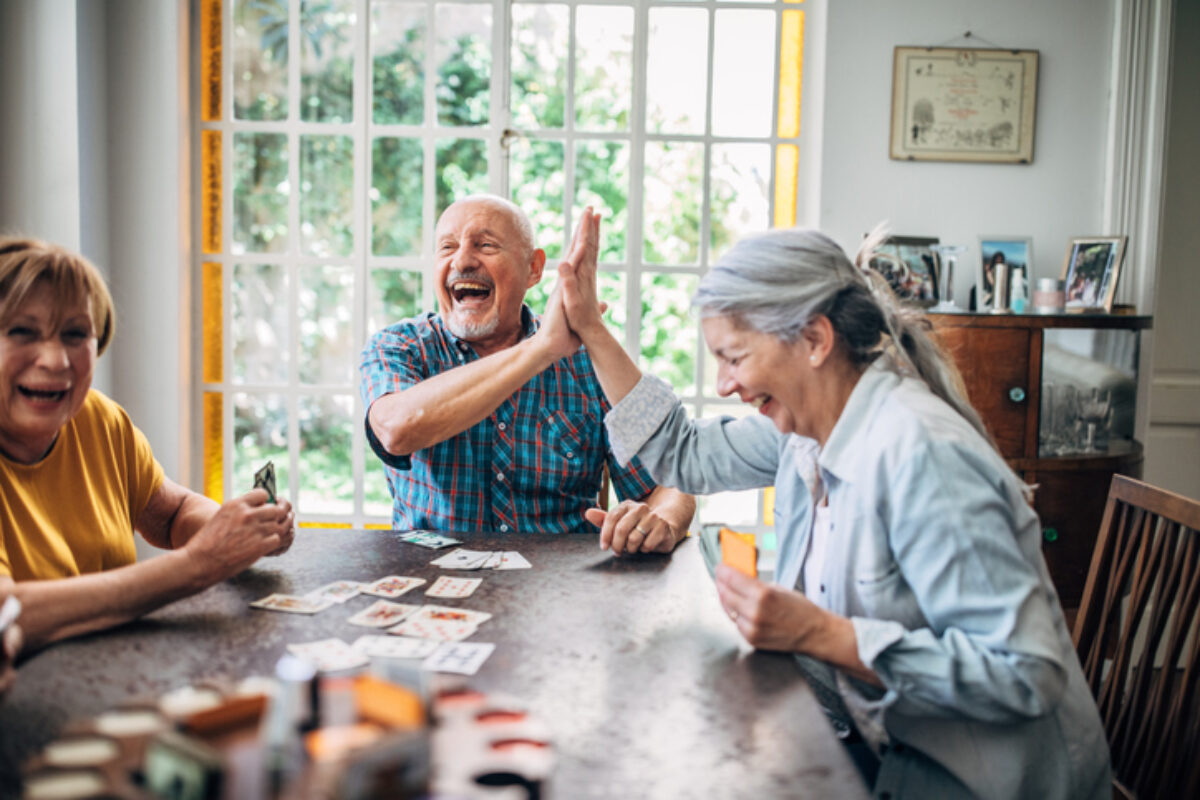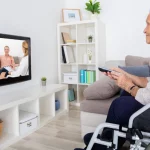While home care may be one of your goals when your loved one has neurocognitive disorders, it can actually be difficult to continue to provide them with appropriate home help as they progress. Allowing the person to live in a place they know well and where they feel most comfortable seems to be the best thing to do, but this is not necessarily possible in all cases. However, if you are taking on the role of caregiver for someone with Alzheimer’s disease or other memory disorders, or if you have hired someone to care for that person, know that there are many stimulating activities to do at home. In this article, we offer you 10!
Some adjustments may be necessary depending on the person’s abilities.
1. Do puzzles
Puzzles have many virtues. They are perfect for people in the early or middle stages of dementia. Indeed, puzzles help stimulate the cognitive capacity of different areas of the brain. Another advantage, you can involve the person in choosing the image or theme. Puzzles exercise the spatial recognition areas of the brain, but they also help keep the brain healthy and can slow brain decline as dementia progresses.

As one puzzle user states:
Research has shown that when we are focused on doing a puzzle, the level of dopamine (a chemical that causes a feeling of well-being) increases in our brain, helping people feel happy. Finally completing a puzzle also provides a strong sense of accomplishment, success and pride.
2. Play
The games are interesting for everyone! Not only are they entertaining, but they can also create a pleasant feeling of happiness. They are also stimulating, and allow very positive interactions to develop between these people and their loved ones. Any game, from a game of cards to a game of Domino or even Scrabble, can create bonding and good humor!
Through play, we can revive memories. But also use skills such as spelling and arithmetic. With the images, the person may be able to easily react or identify. Otherwise, for people in an advanced stage of the disease, there are tactile games that do not rely so much on language but rather call on sensory stimulation skills.
3. Have creative hobbies
Expressing your creativity is for all ages! This is why drawing, painting, coloring, or any other type of visual art can be truly liberating and calming for people with dementia. What’s more, you don’t have to be talented to enjoy and pursue creative activities. They can easily be adapted for less agile people. For example, if holding a pen, pencil, or other writing instrument isn’t an option, there are other art forms or mediums to try. For example, it is possible to make a collage with pre-cut shapes or scrapbooking, with help in applying glue or adhesive tape.
4. Listen to stories
If reading has become difficult for the person with dementia, whether because of their limited attention span or frustration, listening to a story read by a caregiver or a recorded book may be a solution. Even if language recognition or comprehension is limited, the sound of voice can soothe people who are housebound or bedridden.
5. Exercise
There are plenty of videos online to show you how to exercise, even from home! Chair yoga has become very popular. Many organizations are setting up chair yoga sessions! Some offer it free to educators or even caregivers of people with dementia. If mobility is not compromised, other types of exercises can be fun and effective. For example, if the person can, swimming is a great exercise. Also, easy cardio or weightlifting exercises with light loads can be practiced.

6. Listen to music and dance
Listening to music is a hobby that many enjoy. Thanks to it, we can feel transported to a place or event experienced a long time ago, feel positive emotions and more. That’s why it’s a great way to try to rekindle memories, but also to just enjoy and relax. Whether sitting and listening quietly or dancing or swaying, listening to music reduces frustration, boredom and apathy. It can also help regulate agitation in people with neurocognitive disorders. You can listen to music for yourself, but it can become a real social activity. In all cases, it activates many regions of the brain. Besides,
7. Offer photos and familiar objects
Looking at photos, old items or family keepsakes can be a great way to bring back memories. But even if it doesn’t work as well as you hoped, the images are visually stimulating and the objects are interesting to look at. However, if you want to increase the likelihood that one of them will trigger a memory, you can tell the story behind the item. You can also try to “revive” the person’s memories when they hold or look at the object, accompany them with questions, discussions, etc.
8. Enjoy nature
Spending time outside is a great way to stimulate someone with neurocognitive disorders. Whether on a physical, psychological or emotional level. If the person can walk (or if it is possible to push a wheelchair on passable ground), going for a walk in nature is ideal for getting some physical exercise. Plus, it will appeal to his senses! Point out sounds, smells and textures in the environment.
If the person has a garden, planting flowers, growing fruits and vegetables, or even filling a bird feeder together can be great exercise. If none of these options are feasible, simply sitting on a bench, deck or patio may be enough to observe and listen to what is going on around you. And if going outside isn’t possible due to temperatures or other factors, looking out the window can be just as enjoyable. Show him the colors outside and/or identify the animals passing by.
9. Cook
If the person liked to prepare good meals or bake, cooking with them can bring back those memories. Otherwise, this exercise will awaken his interest with textures, smells and flavors. Take the lead on the recipe, but be sure to involve in measuring, kneading, mixing, etc. if it is within reach. Be careful with hot water or hobs and ovens! You will have a wonderful feeling of satisfaction when you see the final result together!
10. Cuddling pets
For most people, pets are highly valued and complement a family or home. Bonding with animals is a special event and allows humans to feel love, warmth and a sense of belonging. There are also many animals that can provide emotional support!
Emotional support animals can be a real help, especially with psychological disorders. But you don’t need any special training to be cuddled! Visit a nearby animal shelter. Adopting an abandoned animal will bring as much good to your loved one as to the animal!











